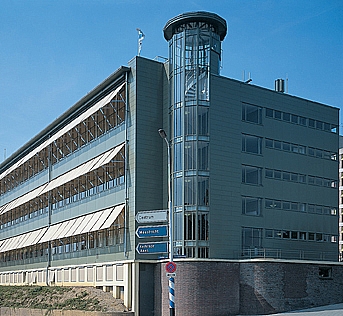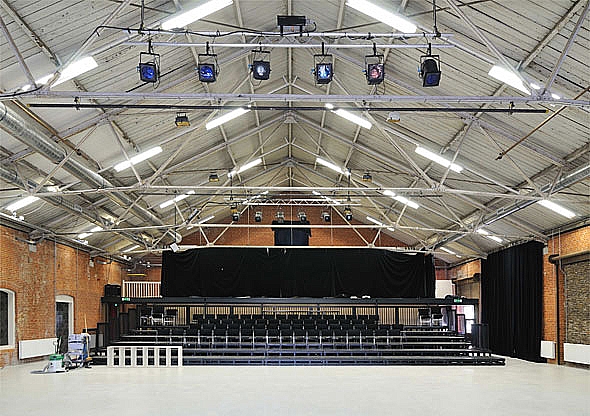
A better environment begins with steel

A better environment begins with steel

A better environment begins with steel

A better environment begins with steel

A better environment begins with steel

Reuse of office building Oranje Nassau Mijnen, Heerlen (Jo Coenen).
Determining the estimated service life (ESL) factor in accordance with Frank Tool’s post graduate research tool (Delft University of Technology)
The report, including background information about the tool, is available from the download section. There is a brief description of the tool at the bottom of this page.
| 1) Stability system (St) | |
| 2) Facade function (GF) | |
| 3) Facade grid (GS) | |
| 4.0) Columns or walls? | |
| 4.1) Grid for structural framework (X) (SX) | |
| 4.2) Grid for structural framework (Y) (SY) | |
| 5) Opening flexibility of floors (Sp) | |
| 6) Load-bearing capacity of floors (D) | |
| 7) Ability of floor to withstand excess loading (Ov) | |
| 8) Topping up - adding storeys to a building (Op) | |
| 9) Excess height (Oh) | |
| 10.1) Access to systems (I) | |
| 10.2) Positioning shafts (L) | |
|
Explanation of graph
The closer the black line is to the green line, the higher the ESL factor and the more sustainable the design. The ESL factor method takes the longer life of the building into account. Environmental costs calculated using Greencalc + are 1/ESL lower. So if the ESL factor is 2 the environmental costs are 1/2 according to Greencalc+. |
Tool for structural sustainability

As part of his studies at Delft University of Technology, at the end of last year Frank Tool introduced a method for determining the sustainability of structures. The method, developed at the initiative of IMd Consulting Engineers, enables designers to assess the environmental impact of the various structural systems and materials during design. The existing instruments, such as Greencalc+, Dubocalc and GPR Gebouw are significantly less suitable. They are intended for checking an entire building, and are insufficiently detailed for a (quick) check of the structure.
The new tool is based on the (expected) service life of the structural framework, in which structural flexibility and adaptability count. Service life determining aspects are the load-bearing capacity and the stress flexibility, the stability system, the excess in floor height and floor area, the grid dimensions, the facade and the location and accessibility of systems.
The tool is geared to Greencalc+. This instrument’s database uses (MRPI) data on recycling and reuse of steel, unfortunately these are not adequate or are incorrectly incorporated. When using the design tool, steel structural systems appear to be worse than alternatives in other materials. This is understandable, but incorrect.
According to Tool, an important reason for developing the method was that load-bearing structures account for around 60% of the material in a building and therefore largely determine the environmental impact of the building. This is a questionable argument, because the contribution of materials to the environmental impact of the building is (strongly) dependent on the service-life of the building. For a long life span, the environmental impact of the use of energy (in the use phase) will surely be greater than that of the materials? In a recent discussion on www.duurzaamgebouwd.nl, Tool added a qualification: "Over a short life span (10-25 years) the influence is approximately the same as that of the use of energy. For longer service lives the impact of energy use increases. For a service life of 75-100 years, the environmental burden will be approximately 20% determined by the materials and 80% by energy consumption. However, assuming that the environmental impact due to energy consumption reduces with increasing use of renewable energy sources, the influence of materials and structures will increase proportionally." Also renewable energy sources are increasingly finding their way into the production and use of construction materials.
Reservations aside, Frank Tool's method provides a valuable initiative for determining the service life of a building based partly on the life of its supporting structure. A subsequent investigation into determining the service life of supporting structures is planned. The results of this will be used to increase the usability and reliability of the tool.
Photo: Steel structure of theatre complex, formerly a tram workshop in Winschoten, The Netherlands (KAW architects and consultants).